Fusión por inducción de electrodos Atomización con gas inerte (EIGA) es un proceso fascinante y altamente técnico utilizado en la producción de polvos metálicos de alta calidad. Esta técnica es especialmente valorada por su capacidad de producir polvos con una pureza excelente, una distribución uniforme del tamaño de las partículas y morfologías de partículas específicas, que son esenciales en diversas aplicaciones de fabricación avanzada. En esta extensa guía, nos adentraremos en los entresijos de la EIGA, exploraremos modelos específicos de polvo metálico y ofreceremos información detallada sobre sus propiedades, aplicaciones y ventajas.
Visión general de la fusión por inducción con electrodos Atomización con gas inerte
La atomización con gas inerte por fusión por inducción de electrodos es un proceso que implica la fusión de un electrodo metálico mediante calentamiento por inducción, seguido de la atomización del metal fundido en partículas finas utilizando un gas inerte. Este método es muy apreciado para producir polvos libres de contaminación, lo que resulta crucial en aplicaciones como la fabricación aditiva, la pulvimetalurgia y la cerámica avanzada.
Características principales del EIGA:
- Pureza: El proceso minimiza la contaminación, garantizando polvos metálicos de gran pureza.
- Control del tamaño de las partículas: Permite un control preciso de la distribución del tamaño de las partículas.
- Partículas esféricas: Produce partículas esféricas, mejorando la fluidez y la densidad de empaquetamiento.
- Versatilidad: Puede utilizarse con una amplia gama de metales y aleaciones.
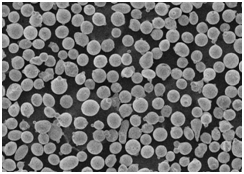
Composición y propiedades de los polvos EIGA
Comprender la composición y las propiedades de los polvos EIGA es esencial para seleccionar el material adecuado para aplicaciones específicas. A continuación, exploramos las composiciones y propiedades de varios polvos metálicos producidos con EIGA.
Tipos y composiciones de los polvos EIGA:
| Polvo metálico | Composición | Propiedades |
|---|---|---|
| Titanio (Ti-6Al-4V) | 90% Titanio, 6% Aluminio, 4% Vanadio | Alta resistencia, ligereza y resistencia a la corrosión |
| Aleación de níquel (Inconel 718) | 50-55% Níquel, 17-21% Cromo, 4,75-5,5% Niobio, más Hierro, Molibdeno, Titanio | Resistente a altas temperaturas y a la corrosión |
| Acero inoxidable (316L) | 16-18% Cromo, 10-14% Níquel, 2-3% Molibdeno, resto Hierro | Resistente a la corrosión, buenas propiedades mecánicas |
| Aleación de cobalto-cromo (CoCrMo) | 60-65% Cobalto, 26-30% Cromo, 5-7% Molibdeno | Alta resistencia al desgaste, biocompatible |
| Aleación de aluminio (AlSi10Mg) | 85-90% Aluminio, 9-11% Silicio, 0,2-0,4% Magnesio | Ligero, buenas propiedades mecánicas, moldeable |
| Cobre (Cu) | 99% de cobre | Excelente conductividad eléctrica y térmica |
| Tungsteno (W) | 99% Tungsteno | Muy alta densidad, alto punto de fusión |
| Aleación de magnesio (AZ91D) | 90-93% Magnesio, 8-9% Aluminio, 0,2-1% Zinc | Ligero, buena moldeabilidad |
| Acero para herramientas (H13) | 0.32-0,45% Carbono, 4,75-5,5% Cromo, 1,1-1,75% Molibdeno, equilibrio Hierro | Alta resistencia al desgaste, buena tenacidad |
| Aluminuro de titanio (TiAl) | 45-48% Titanio, 48-51% Aluminio | Ligereza y resistencia a altas temperaturas |
Características de los polvos EIGA:
| Característica | Descripción |
|---|---|
| Morfología de las partículas | Esférica, mejora la fluidez y la densidad de empaquetamiento |
| Pureza | Alta, gracias a la atmósfera de gas inerte que evita la oxidación y la contaminación |
| Distribución del tamaño de las partículas | Estrecha y controlable, fundamental para procesos de fabricación precisos |
| Densidad | Altas densidades de colada y a granel, beneficiosas para las técnicas de fusión en lecho de polvo |
| Superficie | Controlados para optimizar los procesos de sinterización y fusión |
Aplicaciones de los polvos EIGA
Los polvos de EIGA encuentran aplicaciones en diversos sectores, cada uno de los cuales aprovecha las propiedades únicas de estos polvos metálicos de alta calidad. A continuación se muestra una tabla detallada con diferentes aplicaciones.
Aplicaciones y usos de los polvos EIGA:
| Industria | Solicitud | Beneficios |
|---|---|---|
| Aeroespacial | Palas de turbina, componentes estructurales | Elevada relación resistencia/peso, resistencia a la temperatura |
| Médico | Implantes, prótesis, aplicaciones dentales | Biocompatibilidad, resistencia a la corrosión |
| Automotor | Componentes del motor, intercambiadores de calor | Ligero y de alto rendimiento |
| Electrónica | Tintas conductoras, disipadores térmicos | Excelente conductividad eléctrica |
| Energía | Pilas de combustible, componentes de baterías | Alta eficiencia y fiabilidad |
| Fabricación aditiva | impresión 3D de geometrías complejas | Flexibilidad de diseño, menor desperdicio de material |
| Pulvimetalurgia | Piezas sinterizadas, rodamientos | Alta densidad, microestructura uniforme |
| Revestimientos | Revestimientos por pulverización térmica, revestimientos resistentes al desgaste | Propiedades superficiales mejoradas, durabilidad |
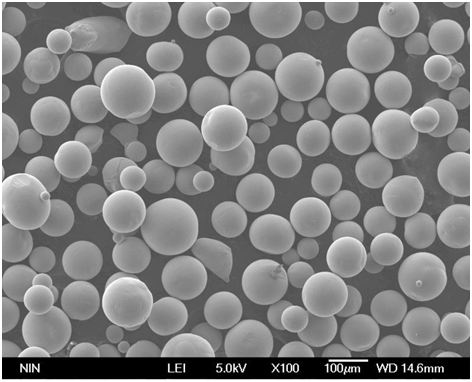
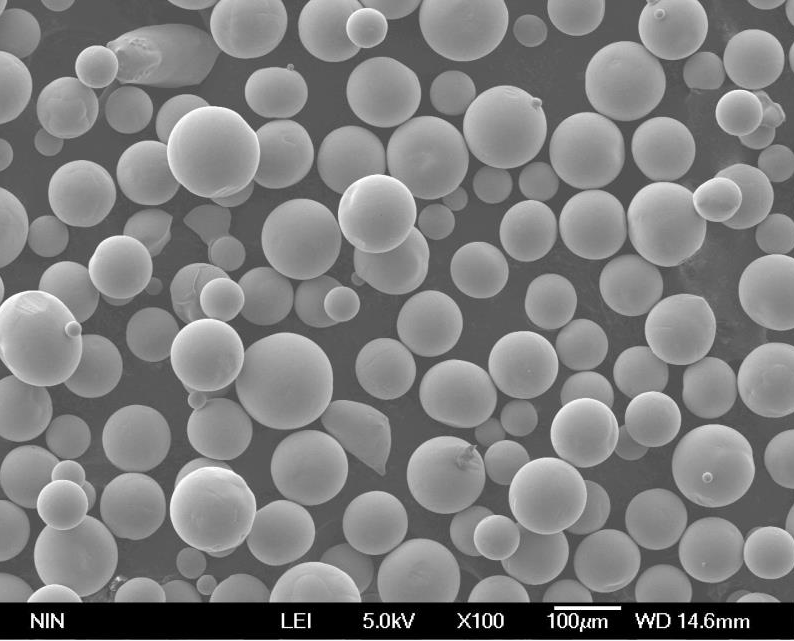
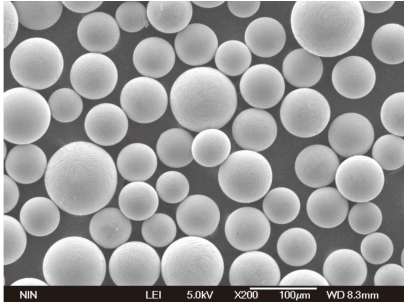
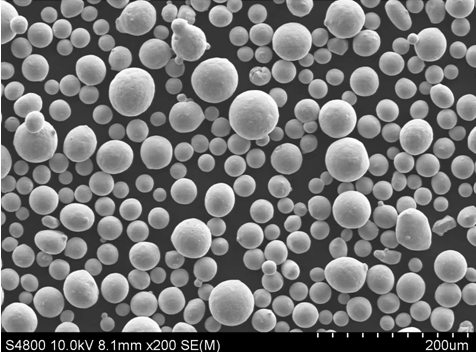
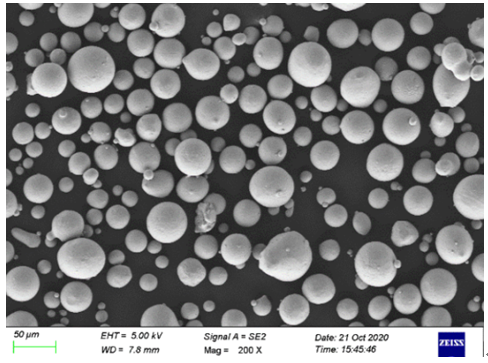
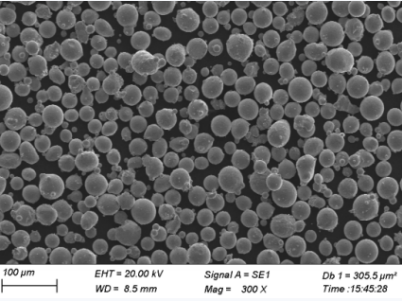
Especificaciones, tamaños, calidades y normas
A la hora de seleccionar polvos EIGA para aplicaciones específicas, es fundamental conocer las especificaciones, tamaños, grados y normas asociados a estos materiales.
Especificaciones y normas para polvos EIGA:
| Polvo metálico | Gama de tamaños de partículas (µm) | Grados estándar | Normas pertinentes |
|---|---|---|---|
| Ti-6Al-4V | 15-45, 45-90 | 5º curso | ASTM F2924 |
| Inconel 718 | 15-45, 45-106 | AMS 5662 | AMS 5662, ASTM B637 |
| Acero inoxidable 316L | 15-45, 45-106 | ASTM F138 | ASTM A276, F138 |
| CoCrMo | 15-45, 45-106 | ASTM F75 | ASTM F75 |
| AlSi10Mg | 15-45, 45-106 | ES AC-43400 | EN 1706 |
| Cobre | 15-45, 45-106 | OFHC | ASTM B216 |
| Tungsteno | 15-45, 45-106 | W1, W2 | ASTM B777 |
| AZ91D Magnesio | 15-45, 45-106 | ASTM B93/B93M | ASTM B93/B93M |
| Acero para herramientas H13 | 15-45, 45-106 | ASTM A681 | ASTM A681 |
| Aluminuro de titanio | 15-45, 45-106 | A medida | ISO 5832-3 |
Proveedores y precios
Para abastecerse de polvos EIGA de alta calidad, es fundamental identificar a los proveedores de confianza y conocer los precios. A continuación se muestra una tabla con algunos proveedores clave y precios indicativos.
Proveedores y precios de los polvos EIGA:
| Proveedor | Polvo metálico | Gama de precios (USD/kg) | Información de contacto |
|---|---|---|---|
| Tecnologías de superficie Praxair | Ti-6Al-4V | $200 – $300 | Sitio web de Praxair |
| Aditivo para carpinteros | Inconel 718 | $150 – $250 | Página web de Carpenter Additive |
| GKN Hoeganaes | Acero inoxidable 316L | $100 – $200 | Sitio web de GKN Hoeganaes |
| Soluciones HC Starck | CoCrMo | $200 – $300 | Sitio web de HC Starck Solutions |
| ECKART América | AlSi10Mg | $50 – $100 | Sitio web de ECKART |
| Productos metálicos especiales AMETEK | Cobre | $50 – $100 | Sitio web de AMETEK SMP |
| Advanced Powder & Coatings Ltd. | Tungsteno | $300 – $500 | Advanced Powder & Coatings Website |
| Zhongnuo Advanced Material | AZ91D Magnesio | $50 – $100 | Sitio web de Zhongnuo |
| Kennametal | Acero para herramientas H13 | $100 – $200 | Sitio web de Kennametal |
| ATI Metales | Aluminuro de titanio | $300 – $500 | Sitio web de ATI Metals |
Comparación de ventajas e inconvenientes de los polvos EIGA
Evaluar las ventajas y limitaciones de los polvos EIGA ayuda a tomar decisiones informadas para aplicaciones específicas.
Ventajas y limitaciones de los polvos EIGA:
| Ventaja | Descripción |
|---|---|
| Alta pureza | EIGA minimiza la contaminación, produciendo polvos de gran pureza. |
| Tamaño uniforme de las partículas | Permite un control preciso de la distribución del tamaño de las partículas. |
| Partículas esféricas | Mejora la fluidez y la densidad de empaquetado, cruciales para la fabricación aditiva. |
| Gama versátil de materiales | Puede producir polvos a partir de una amplia gama de metales y aleaciones. |
| Bajo contenido de oxígeno | La atmósfera de gas inerte reduce la oxidación, manteniendo la integridad del material. |
| Limitación | Descripción |
|---|---|
| Coste | Los polvos EIGA pueden ser más caros que otros métodos. |
| Complejidad | El proceso requiere equipos sofisticados y conocimientos especializados. |
| Volumen de producción | Puede verse limitado el volumen de polvo que puede producirse en un solo lote. |
| Consumo de energía | Elevados requisitos energéticos debido a la fusión por inducción. |
Información detallada y ejemplos
Titanio (Ti-6Al-4V) frente a Inconel 718:
El titanio Ti-6Al-4V y el Inconel 718 son dos destacados polvos metálicos utilizados en aplicaciones de alto rendimiento. El Ti-6Al-4V, conocido por su elevada relación resistencia-peso y su resistencia a la corrosión, se utiliza mucho en los campos aeroespacial y biomédico. En cambio, el Inconel 718, con su resistencia superior a altas temperaturas y a la oxidación, se prefiere para componentes aeroespaciales que funcionan en entornos extremos. Si se comparan los dos, el Ti-6Al-4V es más ligero y más adecuado para aplicaciones sensibles al peso, mientras que el Inconel 718 ofrece mejores prestaciones en condiciones de alta temperatura.
Acero inoxidable 316L frente a aleación de aluminio (AlSi10Mg):
El acero inoxidable 316L y la aleación de aluminio AlSi10Mg se utilizan habitualmente en la fabricación aditiva. el 316L es el preferido por su resistencia a la corrosión y sus propiedades mecánicas, que lo hacen ideal para aplicaciones médicas y marinas. Por otro lado, el AlSi10Mg, al ser ligero y moldeable, es excelente para aplicaciones de automoción y aeroespaciales en las que es crucial reducir el peso. La elección entre estos materiales suele reducirse a los requisitos específicos de la aplicación: el 316L ofrece durabilidad y el AlSi10Mg ahorro de peso.
Aleación de cobalto-cromo (CoCrMo) para aplicaciones médicas:
La aleación de cobalto-cromo (CoCrMo) se utiliza mucho en aplicaciones médicas, sobre todo en implantes y prótesis, por su gran resistencia al desgaste y biocompatibilidad. La capacidad de esta aleación para soportar las duras condiciones ambientales del cuerpo sin degradarse la convierte en la mejor opción para implantes de larga duración. Además, sus propiedades mecánicas son idóneas para aplicaciones de carga, lo que garantiza la fiabilidad y longevidad de los dispositivos médicos.
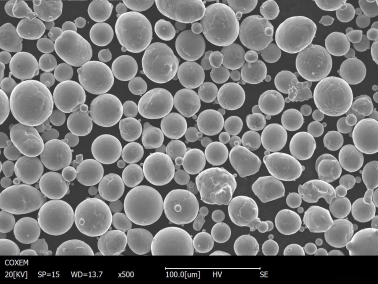
Preguntas más frecuentes
| Pregunta | Respuesta |
|---|---|
| ¿Qué es la fusión por inducción con electrodos y atomización con gas inerte? | La EIGA es un proceso que consiste en fundir un electrodo metálico mediante calentamiento por inducción y atomizar el metal fundido en finas partículas utilizando un gas inerte. |
| ¿Qué metales pueden procesarse con EIGA? | Una amplia gama de metales y aleaciones, como titanio, níquel, acero inoxidable, cobalto-cromo, aluminio, cobre, tungsteno, magnesio, acero para herramientas y aluminuro de titanio. |
| ¿Cuáles son las ventajas de utilizar los polvos EIGA? | Los polvos EIGA ofrecen alta pureza, tamaño uniforme de partículas, morfología esférica y bajo contenido en oxígeno, lo que los hace ideales para aplicaciones de fabricación avanzadas. |
| ¿Cómo se compara EIGA con otros métodos de producción de polvo? | La EIGA proporciona una pureza y un control de partículas superiores a métodos como la atomización con gas o con agua, aunque puede resultar más cara y compleja. |
| ¿Cuáles son las aplicaciones habituales de los polvos EIGA? | Las aplicaciones incluyen componentes aeroespaciales, implantes médicos, piezas de automóvil, electrónica, sistemas energéticos, fabricación aditiva, pulvimetalurgia y revestimientos. |
| ¿Qué factores deben tenerse en cuenta al seleccionar los polvos EIGA? | Los factores clave son los requisitos específicos de la aplicación, las propiedades deseadas del material, la distribución granulométrica, la pureza y el coste. |
| ¿Pueden utilizarse los polvos EIGA en la fabricación aditiva? | Sí, los polvos EIGA son muy adecuados para la fabricación aditiva debido a su distribución controlada del tamaño de las partículas y a su gran pureza, que mejoran la calidad de las piezas impresas. |
| ¿Cuál es el tamaño típico de las partículas de los polvos EIGA? | El tamaño de las partículas suele oscilar entre 15 y 106 micras, en función de la aplicación y los requisitos. |
| ¿Existen limitaciones a la hora de utilizar los polvos EIGA? | Entre sus limitaciones figuran los costes más elevados, la complejidad del proceso, los volúmenes de producción limitados y el elevado consumo de energía. |
| ¿Dónde puedo comprar los polvos EIGA? | Entre los proveedores de renombre figuran Praxair Surface Technologies, Carpenter Additive, GKN Hoeganaes, HC Starck Solutions, ECKART America, AMETEK Specialty Metal Products, Advanced Powder & Coatings Ltd., Zhongnuo Advanced Material, Kennametal y ATI Metals. |
Conclusión
Fusión por inducción de electrodos Atomización con gas inerte es una tecnología de vanguardia que desempeña un papel fundamental en la producción de polvos metálicos de alta calidad. Su capacidad para producir polvos con una pureza excepcional, una distribución precisa del tamaño de las partículas y una morfología esférica la hace indispensable en sectores de fabricación avanzados como el aeroespacial, el médico y la fabricación aditiva. Al conocer la composición, las propiedades, las aplicaciones y las ventajas de los polvos EIGA, las industrias pueden aprovechar esta tecnología para lograr un rendimiento superior y la innovación en sus productos.
Tanto si es ingeniero, investigador o fabricante, esta completa guía le proporciona los conocimientos y la perspectiva necesarios para navegar por las complejidades de los polvos EIGA y tomar decisiones informadas para sus necesidades específicas.

